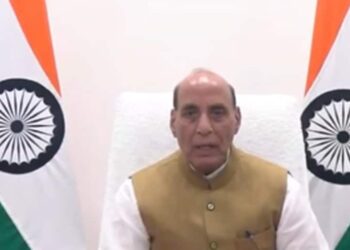In a significant boost to the defense sector, India successfully conducted night trials of the Agni-V nuclear-capable ballistic missile on Thursday, amid increased tensions with China as a result of recent clashes along the LAC in Arunachal Pradesh.
The indigenous missile, developed by the Defence Research and Development Organization (DRDO), was tested at a defense facility off the coast of Odisha at around 5.45 p.m. on Thursday evening.
According to Defense Ministry sources, the test was conducted primarily to validate various new technologies onboard the missile, which can strike targets at ranges ranging from 5,000 to 5,500 kilometers with a high degree of accuracy. The flight performance of the missile, like all other tests, was tracked and monitored by radars, range stations and tracking systems all through the mission including by the assets deployed in the sea. The last test conducted in October 2021 was also conducted at night.
Agni derives its name from the Sanskrit word for fire and is used in the context of Agni being one of the five primary elements, or Panch Mahabhutas. Other names include Prithvi (Earth), Aapa (Water), Wayu (Air), and Akash (Space). Prithvi and Akash are the names given to missiles developed by the DRDO.
Since 2012, Agni-5 has been tested numerous times with success. The Ministry of Defence in its statement at the time of the last test in October 2021 highlighted the posture of ‘credible minimum deterrence’ and ‘No First Use,’ which are pivotal points of India’s nuclear doctrine, first published in 2003.
The doctrine’s recommendations include: establishing and maintaining a credible minimum deterrent. Nuclear weapons will only be used in retaliation for a nuclear attack on Indian territory or on Indian forces anywhere, according to the ‘No First Use’ policy. The nuclear retaliation to a first strike will be massive, with the goal of causing “unacceptable damage.”
The development of Agni missiles began in early 1980 under the Integrated Guided Missile Development Programme, which was led by Dr. APJ Abdul Kalam, a key figure in India’s missile and space programs who also served as the country’s 11th President.
The medium to intercontinental ranges of Agni missile systems 1 to 5 range from 700 kilometers for Agni-1 to 5000 kilometers and above for Agni-5. The DRDO successfully tested the new generation nuclear capable ballistic missile Agni P, an advanced variant of the Agni class of missiles, in June of last year. Agni P is a canisterized missile with a range of 1,000 to 2,000 kilometers.
Source:IE







 Finance
Finance







